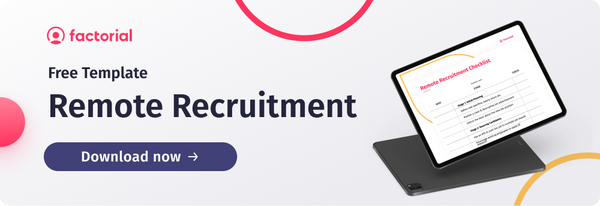The UK finance industry has historically struggled to attract and retain women. And while progress has undoubtedly been made in recent years – especially around attracting women to entry-level positions – there is still a deficit in leadership positions.
The gender split across UK financial services board positions in 2023 is 43% women and 58% men, up from 37% and 63%, respectively, in 2022. On the face of it, this seems like significant progress, but there is still a 16% disparity in gender representation at the top of the financial services sector.
In this article, we’ll explore how you can address this by attracting and retaining more women in finance.

1) Review your job descriptions
Attracting women into the finance industry starts with the first touch point with your business—recruitment.
Research shows men and women approach job descriptions differently, and adapting them towards female preferences can be more attractive to women – while not putting off men.
- Communicate your values: Women are much more likely to look for roles in the financial services sector with which they feel their values align. This doesn’t mean saying what you think they might want to hear but consistently and authentically communicating your business’s values and identity.
- Ensure job descriptions are too restrictive: Do your vacant roles require a degree-level education if someone has the relevant experience level? Women are more likely to not even apply for a job if they’re concerned about not fulfilling the entirety of the job description.
- Think about language: Women tend to favour job descriptions with keywords like support, care and commitment and are also less likely to apply for roles where words like dominant, ambitious and competitive are too prevalent.The reverse doesn’t seem to be true for men, and while they might favour the latter set of keywords, they aren’t put off by the former. Software is also available to help you measure the inclusivity of your job roles, with tools like Textio providing advanced inclusive language guidance.

2) Tackle unconscious bias
Unconscious bias can perpetuate unequal gender representation in businesses when hiring managers are unaware of the biases around social stereotypes they hold outside their conscious awareness.
It can make tackling gender diversity by hiring women more challenging, but it goes beyond hiring and also means looking at equal pay, fair performance reviews, and making sure women are being equitably selected for leadership opportunities.
Here are some ways to get started:
- Use HR technology to give you accurate data to help you make fair and informed business decisions. For example, commit to always having an interview pool reflective of the talent available in the market. Products like Factorial’s Applicant Tracking System allow you to track the entire employee lifecycle to identify trends to help you address unconscious bias.
- Train recruiters and hiring managers to understand and recognise unconscious bias. Just being able to recognise it is the first step to preventing it.
- Think about DE&I training for the whole business – not just recruiters and managers – to help everyone understand unconscious bias and contribute to building a more diverse and inclusive workplace.
3) Increase mentoring and training opportunities
A successful mentoring or career development programme can positively impact female retention, employee success rate and promotion readiness.
Men have historically benefitted from more access to informal relationships with senior male colleagues across all industries, not just finance, and to help women access the same level of support, businesses have found success in initiatives exclusively for women. These can be mentoring programmes, leadership training, or other forms of support to give women an equal footing to men.
For them to be successful and fair, both men and women in senior positions must commit their support to these initiatives.
4) Allow flexible working
Working mothers tend to prioritise flexibility in their roles because they are often still the primary caregivers. A Harvard Business School alum survey found that 37% of female millennials and 42% of married women were even planning how to manage their careers alongside parenthood before it happened.
It is more than just a practical necessity – priorities have changed, and younger generations of women (and men) are seeking better work-life and family balance.
To attract and retain female talent, businesses must go beyond offering flexible hours and remote working opportunities and work on unwinding the stigma attached to using these options. It’s crucial to normalise flexible working for men and women and address any negative associations of choosing to work from home or leaving early to pick up children so that it doesn’t negatively impact career prospects.
The pandemic has helped normalise flexible working, although, with recent moves back to the office, there is a concern that any gained ground could be lost. A full-time return to the office would disproportionately disadvantage women, and the financial services industry could find they lose talent to industries more willing to embrace flexible working.
 5) Increase the visibility of female role models
5) Increase the visibility of female role models
Role models have an amplified benefit for women because of gender bias, particularly in fields traditionally dominated by men. Having great female role models inspires other women to achieve.
You can support this by highlighting the achievements and contributions of women in your organisation and showing how they’ve impacted their business area and the sector internally and externally.
6) Promote a culture of inclusivity
Challenge and address stereotypes in financial services to help all employees feel included and valued by formalising inclusivity in your internal policies and procedures. By doing this, you can help to champion diversity and prevent discrimination against women and other minority groups in banking and finance.
There are also external initiatives your business can be a part of to highlight your stance on diversity and inclusion. Initiatives like the Women in Finance Charter, established by the government’s HM Treasury in 2016, aim to encourage action across the industry with the support of signatory firms.
By signing the charter, financial services firms commit to assigning a senior executive responsible for gender diversity, setting internal targets, publishing progress, and linking senior executive pay to that progress.
You can also work towards building a more inclusive culture by:
- Educating and training senior management on diversity and inclusion
- Forming focus groups or employee resources groups specifically to champion inclusivity
- Actively celebrate employee differences
- Listening to employee feedback and taking action
- Communicating diversity and inclusion goals and being accountable for progress.
7) Understand the importance of parental leave
A substantial obstacle in the way of progress toward gender equality in banking, finance, and other industries is the imbalance in domestic responsibilities. Women continue to shoulder a disproportionate share of domestic work, often intensifying when they become mothers.
This issue can be partially attributed to the unequal distribution of parental leave, with mothers traditionally granted significantly more time off than fathers. This disparity perpetuates the idea that childcare duties primarily belong to women.
To address this challenge and promote gender equality in the workplace – and beyond – businesses can advocate for an equal parental leave policy and actively encourage male employees to use it. Additionally, it is crucial to dismantle any stigma associated with men taking time off to care for their children, like picking up a sick child or handling school responsibilities.
While this might seem counterintuitive, supporting men in their roles as caregivers at home can give women the time and the space to thrive in their careers and realise their full potential in the workplace.



